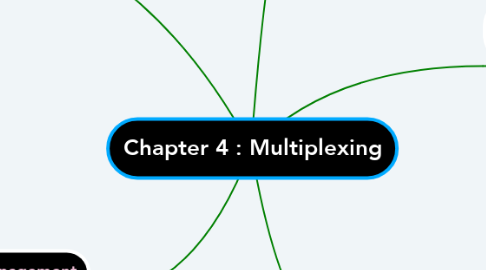Chapter 4 : Multiplexing
por Syarifah Syahmina Arvina


1. Definition :
1.1. A set of techniques that allows the transmission of multiple signals across a single data link
2. Data Rate Management
2.1. Multilevel Multiplexing
2.1.1. Used when data rate of all input line is a multiple of others
2.2. Multiple-slot Multiplexing
2.2.1. More efficient to allot > 1 slot in a frame to a single input line
2.3. Pulse Stuffing Multiplexing
2.3.1. Bit rates of sources are not multiple integers of each other
3. Frequency-division Multiplexing
3.1. Analog
3.2. The bandwidth of a link (Hz) is > the combined bandwidths of the signals
3.3. Combines analog signals become one composite signal
3.4. Channels seperated by strips of unused bandwidth to prevent signals from overlapping
4. Wavelength-division Multiplexing
4.1. Analog
4.2. The multiplexing & demultiplexing involve optical signals
4.3. Light are multiplexed & demultiplexed by using aprism
4.4. Can multiplex a very large number of channels by spacing channels closer to one another
5. Time-division Multiplexing
5.1. Digital
5.2. Combines several low data rate channels into one high rate
5.3. FDM - bandwidth is shared TDM - time is shared
5.4. Synchronous TDM
5.4.1. each input occupies one time slot and occupies one output time slot
5.4.2. grouped into frames
5.5. Statistical Time-division Multiplexing
5.5.1. slots are dynamically allocated
5.5.2. the number slots in each frame is less than the number of input lines

